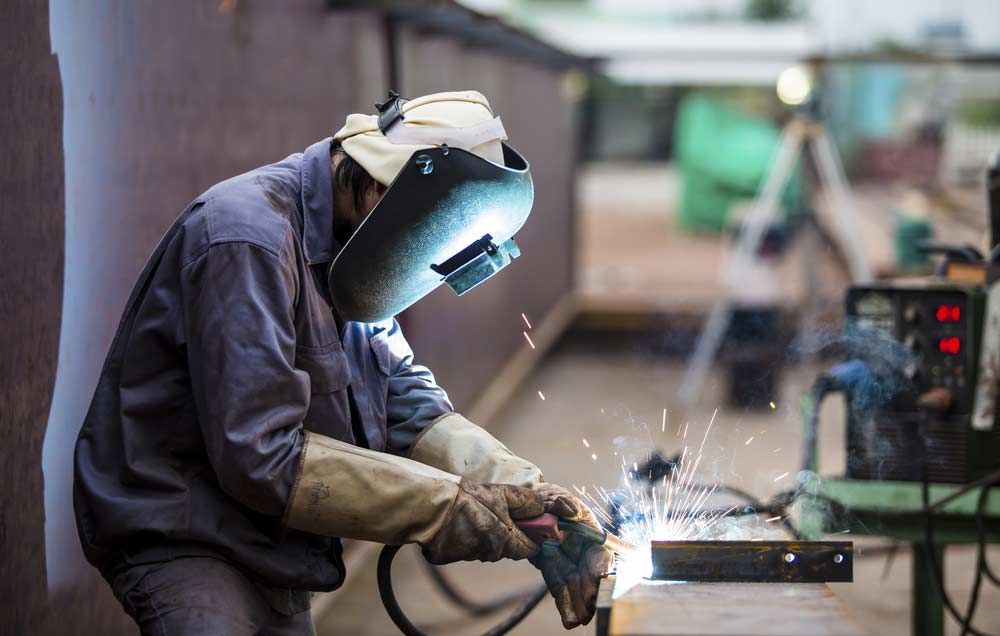Call Now For a Free Quote
07 5437 0817
Blog > What Are The Different Types Of Welding And Which Is The Best?
What Are The Different Types Of Welding And Which Is The Best?
Welding is not just a technical procedure; it's the essential force behind every metal structure we see around us. In the diverse and intricate field of welding, a variety of methods exist, each with its unique benefits. This leads to an important question: which method truly stands out? This blog aims to shed light on various welding techniques to help you identify the best one for your project.
Understanding The Different Types Of Welding Techniques
Welding is not a one-size-fits-all technique. Different projects require various approaches. Here's a quick look at some popular methods.
MIG Welding
MIG (metal inert gas) welding is known for its speed and versatility. It's perfect for a range of materials and thicknesses.
TIG Welding
TIG (tungsten inert gas) welding offers incredible control and precision, ideal for intricate designs and thin materials.
Stick Welding
Also known as shielded metal arc welding, this method is great for outdoor use, especially on rusty or dirty materials.
Which Welding Method Is Most Effective For Structural Steel?
When tackling projects involving structural steel, the choice of welding method is crucial for ensuring both the integrity and longevity of the structure. MIG welding stands out as a highly effective option for such tasks.
Renowned for its efficiency and versatility, MIG welding is adept at handling a variety of steel thicknesses, making it a suitable choice for large-scale construction projects. Its ability to produce strong, long-lasting welds quickly is a significant advantage, especially in commercial or industrial settings where time and durability are of the essence.
How To Choose The Best Welding Technique For Your Specific Needs
Choosing the right welding technique depends on several factors:
Material Type
Each metal type needs a particular welding method. For instance, TIG is excellent for aluminium.
Project Complexity
For intricate designs, TIG offers greater control, while MIG is suitable for straightforward, long welds.
Location
For outdoor projects, stick welding can be ideal due to its resistance to wind and weather.
Evaluating The Pros And Cons Of Popular Welding Methods
Each welding method has its advantages and limitations:
- MIG Welding: Fast and versatile, MIG is excellent for a range of materials and thicknesses. However, it might not be the best choice for extremely thick materials or for the highest precision work.
- TIG Welding: Known for its high precision and quality finish, TIG is ideal for detailed work. The downside is that it requires more skill and is generally slower than other methods.
- Stick Welding: Excellent for outdoor conditions and rough materials, stick welding is robust and versatile. However, it may not provide a clean finish compared to MIG or TIG.
Your Project Deserves The Best Welding: Contact Us Today!
In conclusion, the best welding method depends on your project's specific needs. Understanding these needs is important for choosing the right technique. If you're looking for expert advice or steel fabrication services for your next project, turn to On the Spot Steel Fabrication. With years of experience and a commitment to quality, we can help you choose the best welding method for your project. Contact us today for your steel fabrication needs on the Sunshine Coast!
Testimonials
We have used On the Spot Steel Fabrication for over 12 years for a variety of projects. Over this time Chris and his team of skilled fabricators have consistently produced outstanding results. On the Spot Steel Fabrication value workmanship and professionalism and have invested in the latest technologies to ensure all projects are accurately cut and fabricated to exact specifications. We have no hesitation in recommending On The Spot Steel Fabrication for any steel manufacturing solutions.
- Landmark Products
About Us
On the Spot Steel Fabrication Sunshine Coast specialises in aluminium and steel fabrication, CNC drilling as well as structural steel supply and installation.
From large commercial projects through to small scale domestic projects, we provide high-quality workmanship at competitive rates.
Contact one of our friendly team for a free quote today!
QBCC: 1100024
Contact Us
Mon-Fri 07:00 am - 03:30 pm
Sat-Sun Closed
Locate Us





